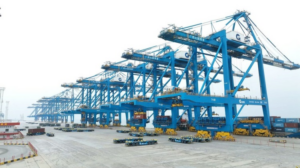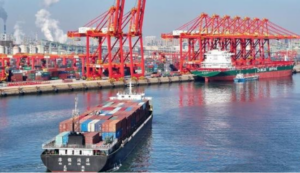OPINION BY: Qian Feng
Editor’s note: As China is busy preparing for the annual two sessions of the National People’s Congress (NPC) and the Chinese People’s Political Consultative Conference (CPPCC), some Western media have been enthusiastically hyping that the Chinese economy is collapsing. Is the Chinese economy going to fail? What opportunities have China’s growth brought to the world? China Economy from a Global Perspective is a 10-part series analyzing the above questions. The fourth essay exploresthe business environment in China. Qian Feng is a senior research fellow at the National Strategic Institute, Tsinghua University, and Taihe Institute. The article reflects the author’s opinions, and not necessarily the views of CGTN.
Looking around the world, the spillover effects of monetary policy tightening in major economies are prominent. The risks of unilateralism, protectionism, regional conflicts and geopolitics are rising, and the world economy is faltering.
Against this backdrop, the economic performances of the world’s second largest economy have always attracted attention. Compared with the past, China’s economic growth slowed down in 2023 and is facing many difficulties and challenges. In this context, some Western media and think-tanks launched a new round of talking down on the Chinese economy. Their purpose is to render the panic and undermine investors’ confidence in China, so as to short Chinese assets and make huge profits while treating China as a “scapegoat” for the sluggish world economic growth and their own social and economic problems.
Don’t be deceived by false narratives – China’s economic might remains unshakable. China’s gross domestic product (GDP) grew by 5.2 percent year on year to 126.06 trillion yuan ($17.71 trillion) in 2023, according to data released by the National Bureau of Statistics (NBS). It has contributed more than 30 percent to world economic growth for many years in a row, ranking among the top major economies in the world as the largest engine of world economic growth.

China’s economic growth is mainly a result of the country’s macro-control measures. Over the past decade, China has implemented numerous opening-up measures, reducing restrictive measures and promoting a more favorable environment for foreign investment. The more China develops, the more open it becomes. The introduction of the management model of pre-establishment national treatment plus a negative list has contributed to a more transparent and predictable investment landscape. China has remained a strong magnet for global investors, with the country’s landmark Foreign Investment Law offering a powerful guarantee for law-based opening-up. The implementation of the Foreign Investment Law and alignment with international economic and trade rules have further improved the legal framework for foreign investment.
More than 80 percent of foreign-funded companies were satisfied with China’s business environment last year, while over 90 percent believe the Chinese market is attractive, according to a report on its findings published by the China Council for the Promotion of International Trade.

“We believe that China will remain on a positive trajectory in the long run, and its market will continue to attract multinational corporations as well as foster start-ups,” Denis Depoux, global managing director of Roland Berger, a consulting firm, said recently. “There is also vast growth potential in technology-driven productivity improvement and consumer spending.” China’s business environment is undergoing continuous improvement, bolstering its allure among foreign investors.
The central government’s timely and effective macro-control measures have helped navigate economic challenges and ensure steady growth. This has provided a favorable environment for both domestic and foreign businesses to thrive, contributing to China’s rapid economic development and improvement in living standards.
Judging from the long lens of history, China’s development is a great cause for the progress of all mankind. Today’s China is not only confined within its national geography, but it is also the China of the world. When China’s growth rate rises by one percentage point, growth in other countries increases by around 0.3 percentage points, according to IMF’s analysis. A China that unswervingly promotes a business environment for investors, is injecting more impetus into world economic recovery.
Source: CGTN




